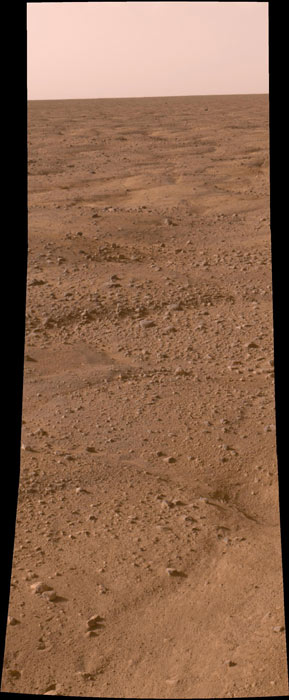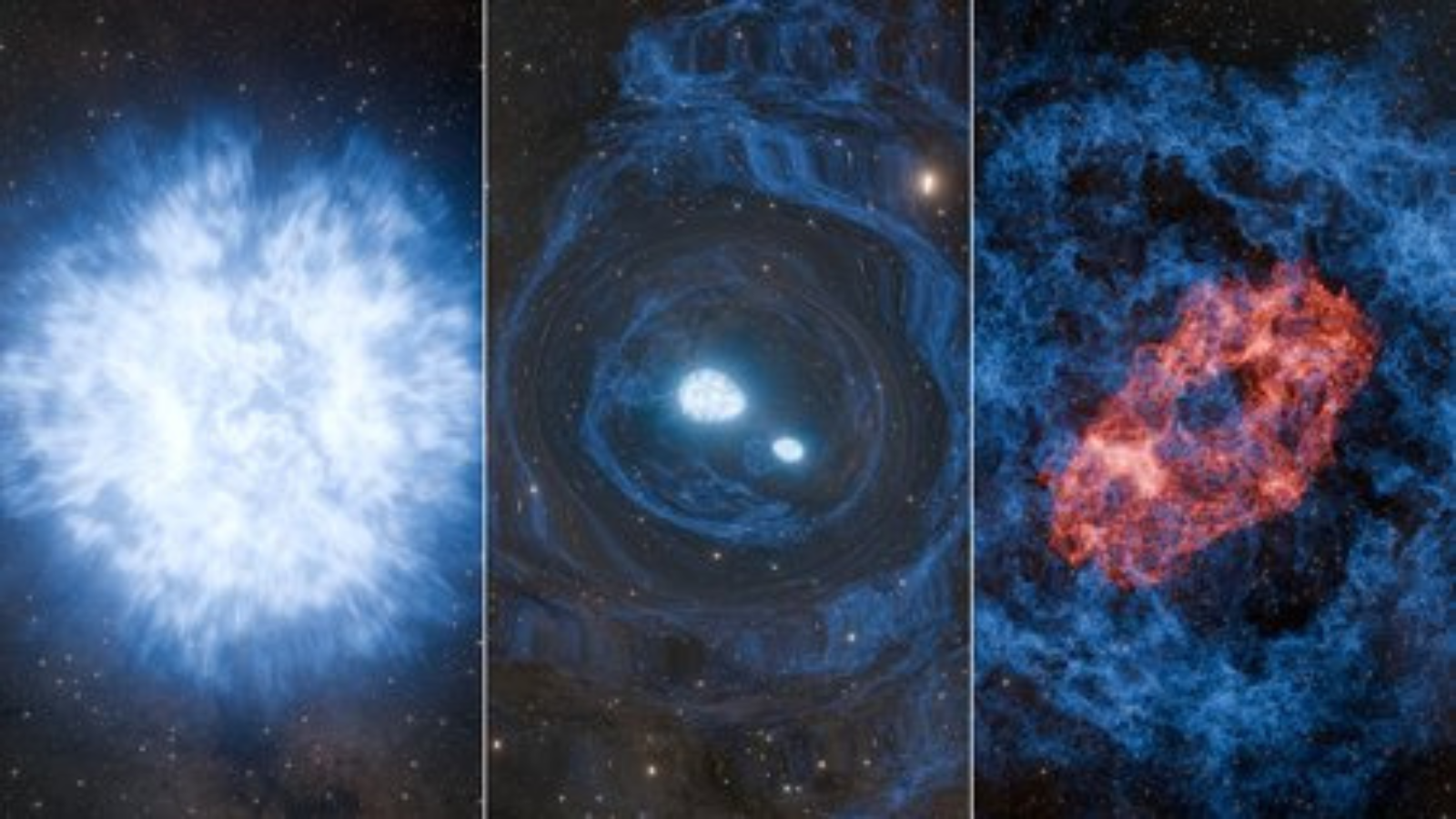NASA: Phoenix Spacecraft in Good Health After Mars Landing

PASADENA, Calif. – NASA?s Phoenix Mars Lander is in fine health afterits unprecedented landing in the Martian arctic Sunday as mission scientiststurn their attention to the craft?s main goal: to explore the layers ofwater ice under the frozen soil.
Phoenixset down on the flat, cracked terrain of Mars? northern polar region aftera harrowing, but successful, plunge through the planet?s atmosphere.
?I know it looks like a parking lot, but it?s a safe place to land,?said Phoenix principal investigator Peter Smith of the University of Arizona,where the mission will be controlled for the majority of its primary 90-dayrun. ?This is a scientist?s dream right here on this landing site.?
Mission scientists received the probe?s first call home here at NASA?sJet Propulsion Laboratory (JPL) at about 7:53 p.m. EDT (2353 GMT) on Sunday,though it takes signals about 15 minutes to traverse the 171 million miles (275million km) between Mars and back on Earth.
Phoenix?s $420 million mission is designed to test the Martian soil andice for signs that the water was once liquid to see if it could have created ahabitable zone for microbial life at some point in the past. The instrumentsinclude a robotic arm that will scoop up dust and ice, as well as a wetchemistry lab and tiny ovens that will analyze the soil to see what compoundsmight be in it.
But before Phoenix can start digging, mission scientists much make sureeverything on the craft is functioning properly. So far, everything looks good,and over the next few days, the craft will be thoroughly checked out and itsscoop-tipped robotic arm extended for the first time.
"Phoenix is an amazing machine and it was built and flown by anamazing team. Through the entire entry, descent and landing phase, it performedflawlessly," said Ed Sedivy, Phoenix program manager at Lockheed MartinSpace Systems Company. "I'm happy to report it's in great shape."
Breaking space news, the latest updates on rocket launches, skywatching events and more!
The lander touched down at the edge of its elliptical target area,drifting slightly most likely because its parachute deployed 6.5 seconds late.Engineers hope to better understand the delay after reviewing more data from thespacecraft.
But the spacecraft?s success made it the first powered landing on Marsin 32 years, when the two massive Viking probes set down in 1976. NASA?s mostrecent probes to land, the rovers Spirit and Opportunity, used airbags tocushion their own bouncy landings in 2004.
"Today you had a chance to watch a team that had something verydifficult to do and they made it look easy,? said NASA chief Mike Griffin afterthe landing success.
Phoenix sentits first images back shortly after landing, bouncing them off NASA?s MarsOdyssey orbiter to relay them to eager scientists on Earth. The firstimage the lander took was of its solar arrays, so that mission engineers couldmake sure they had deployed properly, since they are the craft?s source ofenergy during its three-month mission.
The spacecraft also photographed one of its footpads, to make sure itwas flat on the ground, which it was. Four images of the landing site were alsotaken and assembled into a mosaic, showing some of the landscape surroundingthe lander. These images mark the first time that the Martian arctic has beenphotographed from the surface, showed a flat surface with just a few pebblesstrewn about, which is perfect for Phoenix?s mission.
?Underneath this surface, I guarantee you, there?s ice,? Smith said.?There?s ice under this surface.?
The cracked, polygonal shapes spotted by NASA?s Mars ReconnaissanceOrbiter (MRO) currently circling the planet were seen out to the horizon in Phoenix?sfirst views.
?This is probably the cutest polygon that I have ever seen,? an excitedSmith said of one of the features.
But the images are just a fraction of the terrain surrounding Phoenix, andthe camera has not yet imaged the soil closest to the lander, ?so we have notyet seen what we?re going to be digging into,? Smith said. The rest of theterrain will be filled in by the lander?s stereo camera over the next few days.
Now that the solar arrays are known to be working and the craft haspower, control of Phoenix?s operations has shifted over the University ofArizona for the duration of the mission.
Subsequent images from the spacecraft will show other systems, includingthe bio-barrier protecting the robotic arm and the meteorological mast. Onceall the systems have been checked out and are known to be working properly,Phoenix will turn its attention to the soil and the layers of water iceunderneath it.
"Only five of our planet's 11previous attempts to land on the red planet have succeeded,? said EdWeiler, NASA associate administrator for the Science Mission Directorate at theagency?s Washington, D.C. headquarters. ?In exploring the universe, we acceptsome risk in exchange for the potential of great scientific rewards.?
NASA's next Phoenix mission briefing will be broadcast liveon NASA TV at 2:00 p.m. EDT (1600 GMT) on Monday, May 26. Clickhere for SPACE.com's Phoenix mission coverage and a linkto NASA TV.
- Video: The Nail-Biting Landing of Phoenix on Mars
- Video: Looking for Life in All the Right Places
- The Top 10 Martian Landings of All Time

Andrea Thompson is an associate editor at Scientific American, where she covers sustainability, energy and the environment. Prior to that, she was a senior writer covering climate science at Climate Central and a reporter and editor at Live Science, where she primarily covered Earth science and the environment. She holds a graduate degree in science health and environmental reporting from New York University, as well as a bachelor of science and and masters of science in atmospheric chemistry from the Georgia Institute of Technology.
